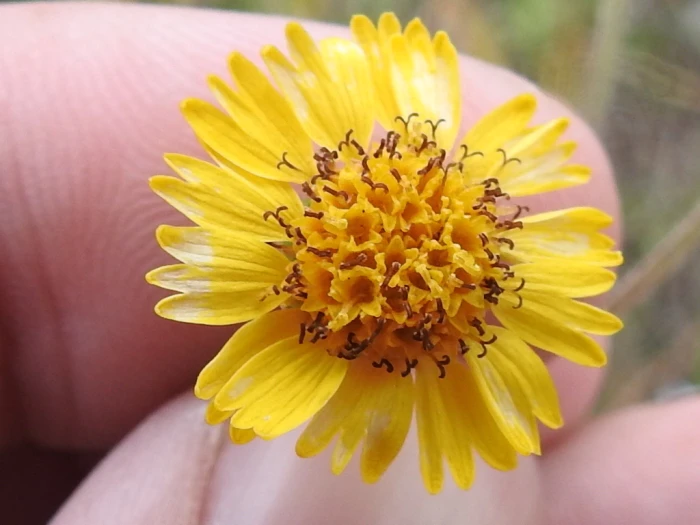Ragleaf Bahia
(Hymenothrix dissecta)
Ragleaf Bahia (Hymenothrix dissecta)
/
/

Sam Kieschnick
CC BY 4.0
Image By:
Sam Kieschnick
Recorded By:
Copyright:
CC BY 4.0
Copyright Notice:
Photo by: Sam Kieschnick | License Type: CC BY 4.0 | License URL: http://creativecommons.org/licenses/by/4.0/ | Rights Holder: Sam Kieschnick | Publisher: iNaturalist | Date Created: 2017-09-29T02:56:26-07:00 |






































Estimated Native Range
Climate Requirements for Anchorage, Alaska
| This Plant | Your Site | Plant Suitability for Your Location | ||
|---|---|---|---|---|
| • Precipitation | 2" - 35" | 27" | Your precipitation may be too high for this plant. | Too high |
| • High Temp. | 59°F - 104°F | 62°F | Your summer temperatures are normal for this plant. | Excellent |
| • Low Temp. | -5°F - 45°F | 11°F | Your winter temperatures are normal for this plant | Excellent |
This plant may not grow well at your location - your precipitation is too high.
Summary
Hymenothrix dissecta, commonly known as Ragleaf Bahia, is an annual, biennial, or short-lived perennial herb native to arid and semi-arid regions, including desert grasslands, chaparral, and open woodlands, primarily in the Southwestern United States and Mexico. It typically grows to a height of 2-3 feet and a width of 1-2 feet. The plant has a distinctive appearance with its dissected leaves and branching form. It produces showy yellow flowers from late summer to fall. The spreading inflorescence bears several flower heads, each with hairy, glandular phyllaries. Each head features a fringe of rounded yellow ray florets about half a centimeter long and a center filled with yellow disc florets, attracting pollinators such as bees and butterflies.
Ragleaf Bahia is valued for its drought tolerance and ability to thrive in challenging conditions, making it suitable for xeriscaping and naturalistic plantings. It is often used in wildflower gardens, borders, and restoration projects. This plant prefers full sun exposure and requires minimal water once established, thriving in well-drained soils. While it is generally low-maintenance, it can self-seed prolifically under favorable conditions, which should be considered in garden planning to prevent unwanted spread.CC BY-SA 4.0
Ragleaf Bahia is valued for its drought tolerance and ability to thrive in challenging conditions, making it suitable for xeriscaping and naturalistic plantings. It is often used in wildflower gardens, borders, and restoration projects. This plant prefers full sun exposure and requires minimal water once established, thriving in well-drained soils. While it is generally low-maintenance, it can self-seed prolifically under favorable conditions, which should be considered in garden planning to prevent unwanted spread.CC BY-SA 4.0
Plant Description
- Plant Type: Herb
- Height: 2-3 feet
- Width: 1-2 feet
- Growth Rate: Moderate
- Flower Color: Yellow
- Flowering Season: Summer, Fall
- Leaf Retention:
Growth Requirements
- Sun: Full Sun
- Water: Low
- Drainage: Fast
Common Uses
Bee Garden, Butterfly Garden, Drought Tolerant, Low Maintenance
Natural Habitat
Arid and semi-arid regions, desert grasslands, chaparral, and open woodlands
Other Names
Common Names:
Scientific Names: Bahia dissecta, Amauriopsis dissecta, Hymenothrix dissecta, Villanova chrysanthemoides, Bahia chrysanthemoides, Bahia dissecta var. anisopappa, Amauria dissecta, Bahia dissecta var. dissecta, Eriophyllum chrysanthemodes
GBIF Accepted Name: Hymenothrix dissecta (A.Gray) B.G.Baldwin